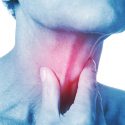Smokeless tobacco: Creating your quit plan

UPMC Health Plan health care managers can help you create a plan to quit smoking and to live tobacco-free
Quitting smokeless tobacco can be just as challenging as quitting cigarettes. However, having a solid support system and a detailed plan can make managing these unique urges easier. In this article, we’ll discuss some steps that may help you develop a quit plan.
According to a 2019 U.S. Department of Health and Human Services study,1 more than two out of every 100 adults reported using smokeless tobacco products. While 2 percent doesn’t sound like a lot, it comes out to approximately 5.9 million adults in the U.S., with most of them reporting daily use.
Most quit apps, articles, and books focus primarily on quitting cigarettes—not other forms of tobacco. While quit methods and tips for quitting smokeless tobacco may overlap with those for quitting cigarettes, smokeless tobacco comes with its own set of challenges.
Both cigarette smoking and smokeless tobacco contain nicotine, and quitting either involves overcoming nicotine addiction. This addiction can be mental, physical, or emotional—or it can be a combination of the three. Overcoming this obstacle can look and feel very similar whether you use cigarettes or smokeless tobacco products. Still, it’d be nice to be able to read material that is tailored to smokeless tobacco use!
We hope this article provides just that: guidance on quitting this unique form of tobacco. We also hope that it will help you understand and overcome the urges you’re having.
Think about your why
What would you gain from quitting? It’s a profound question. Take some time to sit down and think about how your life would be different if you didn’t use tobacco. Write down what you come up with and review the list often to remind yourself why quitting is important to you. Your list should be unique to your life and quit plan.
Maybe it’s saving money, reducing your risk for cancer, lowering your blood pressure, or improving your dental health. Maybe it’s just freedom from needing a smoke break! Ask yourself:
Does using tobacco take away from other people or things I would rather be enjoying?
Understanding nicotine and withdrawal from smokeless tobacco
Both cigarettes and smokeless tobacco products have nicotine. However, the nicotine content of smokeless products tends to be higher than that of traditional cigarettes. Did you know that using two cans of chew each week has the same amount of nicotine as smoking about one and a half packs of cigarettes each day?
Now, you may understand why overcoming these strong urges for nicotine can be challenging and how nicotine replacement therapies (NRTs) like patches, gums, lozenges, nasal sprays, or inhalers may be beneficial. However, they only work if the dose is high enough to balance out the cravings for such high-nicotine products. If you’re quitting smokeless tobacco and using an NRT, make sure you pay attention to the nicotine content in the NRT you choose. It could make all the difference!
After stopping smokeless tobacco, you may feel uncomfortable. Your urges to want to use tobacco may significantly increase. This is withdrawal. Your body is used to having nicotine, and now it must take time to adapt to not having that daily dose. For most people, the worst withdrawal symptoms last only a few days to a few weeks. The timeline can be expected to be the same whether you use smokeless tobacco or smoke cigarettes.
Common symptoms of smokeless tobacco withdrawal:
- Feeling down or depressed
- Having difficulty sleeping
- Being noticeably cranky, frustrated, or angry
- Feeling anxious, nervous, or restless
- Having trouble thinking clearly
- Developing sores in your mouth
- Having headaches
These symptoms may tempt you to use tobacco. Just remember they are temporary. No matter how powerful they may feel in the moment, they will pass.
How to quit smokeless tobacco
Now that we’ve discussed the symptoms you may encounter, you’re ready to create the perfect quit plan. Choosing a Quit Day is a great next step toward reaching your goal of being tobacco-free. That’s the day you’ll stop using smokeless tobacco altogether.
While any day is a good day to quit, you’ll want to choose a day within the next 2-3 weeks. This will give you time to fill prescriptions for any medications you may be using to help you quit. It will also give you time to prepare to cope with cravings and figure out what you will do to replace tobacco use. Make sure to pick an average day without big plans or known stressors.
Identify your triggers and patterns
You may already be aware of your patterns, routines, and triggers. If you’re not, think about specific people, places, or activities that spark the urge to use tobacco. While everyone is unique, some of the most common triggers are:
- Driving.
- Feeling stressed or anxious.
- Experiencing physical or emotional discomfort.
- Finishing meals.
- Feeling bored.
- Being angry or frustrated.
- Being around someone else using tobacco.
- Drinking alcohol.
- Playing a sport.
Triggers can feel impossible to overcome, but most cravings will last for only a few minutes. Take some time to think of things you can do for 10-20 minutes to distract yourself until the urge passes.
Learn to manage your cravings
Triggers come from all kinds of different places. Most commonly, they stem from emotions, routines, environments, and withdrawal symptoms. You may already know where your cravings come from. You may not—and that’s OK. Let’s dive into each category and discuss ways to overcome different types of cravings.
Emotions (Like stress, anger, anxiety, happiness, or boredom)
- Deep breathing. Take some slow, deep breaths. It will help your body calm down.
- Talk to someone. Sharing your feelings with a friend, family member, or therapist can help you process emotions to cope instead of using tobacco.
- Listen to music or a podcast. We often have positive associations with specific music or voices. A favorite artist or podcaster can calm your mind and body and reduce your heart rate, blood pressure, and stress hormones.
- Exercise. Exercising releases endorphins (chemicals in the brain that make you feel good)! Getting active can be a great way to crush cravings of all kinds.
Routines (Like talking on the phone, driving,watching TV, or drinking alcohol)
- Change your routine. Try brushing your teeth right after a meal instead of using tobacco.
- Find a replacement. Try chewing gum, use flavored toothpicks, or eat hard candy to replace having a smokeless tobacco product in your mouth.
Environments (Like sporting events, parties, bars, bonfires, concerts, or holidays)
- Avoid (at least temporarily). Avoid triggering environments until you feel more confident. Over time, it will get easier, and you won’t have to avoid as many things!
- Tell people. If you can’t (or don’t want to!) avoid social environments that trigger you, tell your family or friends that you quit tobacco. Let them know how they can support you. For example, ask them not to use tobacco in front of you or to say no if you ask for any.
- Withdrawal symptoms (Like intense cravings to taste smokeless tobacco, the need to have something in your mouth, headaches, or fogginess)
- Distractions. Find something that will take your mind off the craving for tobacco. Try watching a TV show, cooking a meal, reading a book, taking a walk, or starting a puzzle!
- Use an NRT. If you have considered trying NRTs, now’s the time to get started. These therapies can reduce withdrawal symptoms. You may want to consult your provider before choosing an NRT, but many are available over the counter. If you are under 18 years old, are pregnant, or have a severe medical condition, you should talk to your provider before starting any NRT (even those that do not require a prescription).
Celebrate your successes
Whether small (an hour) or big (months or years), any amount of time spent tobacco-free should be celebrated! Progress is key. Each time you work toward making behavior changes that align with your values, you’re moving in the right direction. Tell people about your successes! Your experience and openness may even encourage others to make healthier lifestyle changes for themselves.
You should also consider ways to reward your successes. Saving the money you would have spent on tobacco for something special is a reward system that works well for many people. At the end of the month or year, you can donate that money to a charity you like or buy or do something you couldn’t afford before!
UPMC Health Plan can help!
We all need support sometimes. UPMC Health Plan has programs and resources that can help you with your quit plan. Call at 1-800-807-0751 (TTY: 711) to speak to one of our lifestyle care managers. They are available Monday-Friday from 7 a.m. to 8 p.m. and Saturdays from 8 a.m. to 3 p.m. EST.
You may also like:
UPMC MyHealth Matters:
- Which smoking cessation aid should you use to quit for good?
- Different forms of tobacco and how they affect your body
- How to talk to your kids about vaping
The Centers for Disease Control and Prevention:
Smokeless Tobacco Fact Sheets: Smoking and Tobacco Use
The U.S. Food and Drug Administration
Nicotine: The Addictive Chemical in Tobacco Products
References:
1Cornelius ME, Wang TW, Jamal A, Loretan CG, Neff LJ. Tobacco Product Use Among Adults—United States, 2019. MMWR Morb Mortal Wkly Rep 2020;69:1736–1742. doi:10.15585/mmwr.mm6946a4



